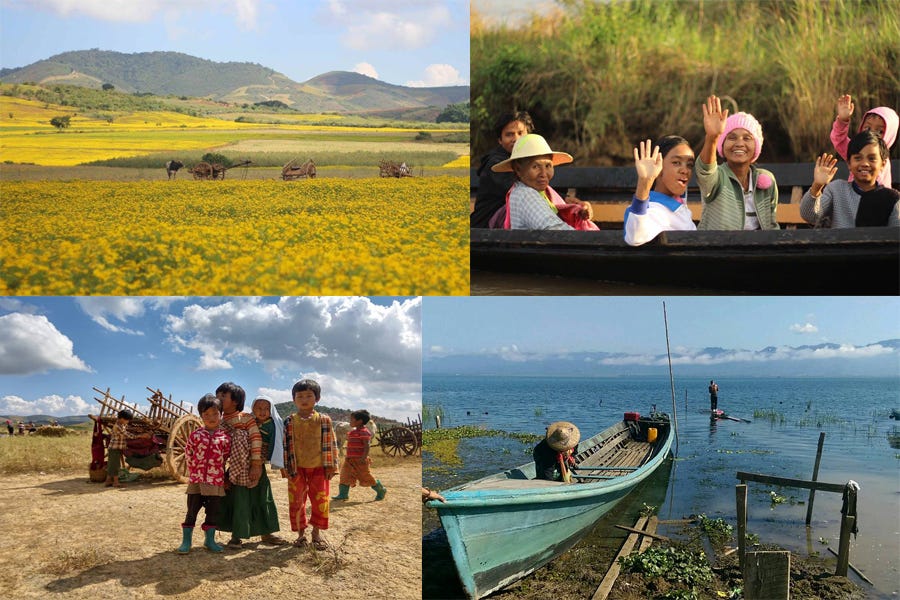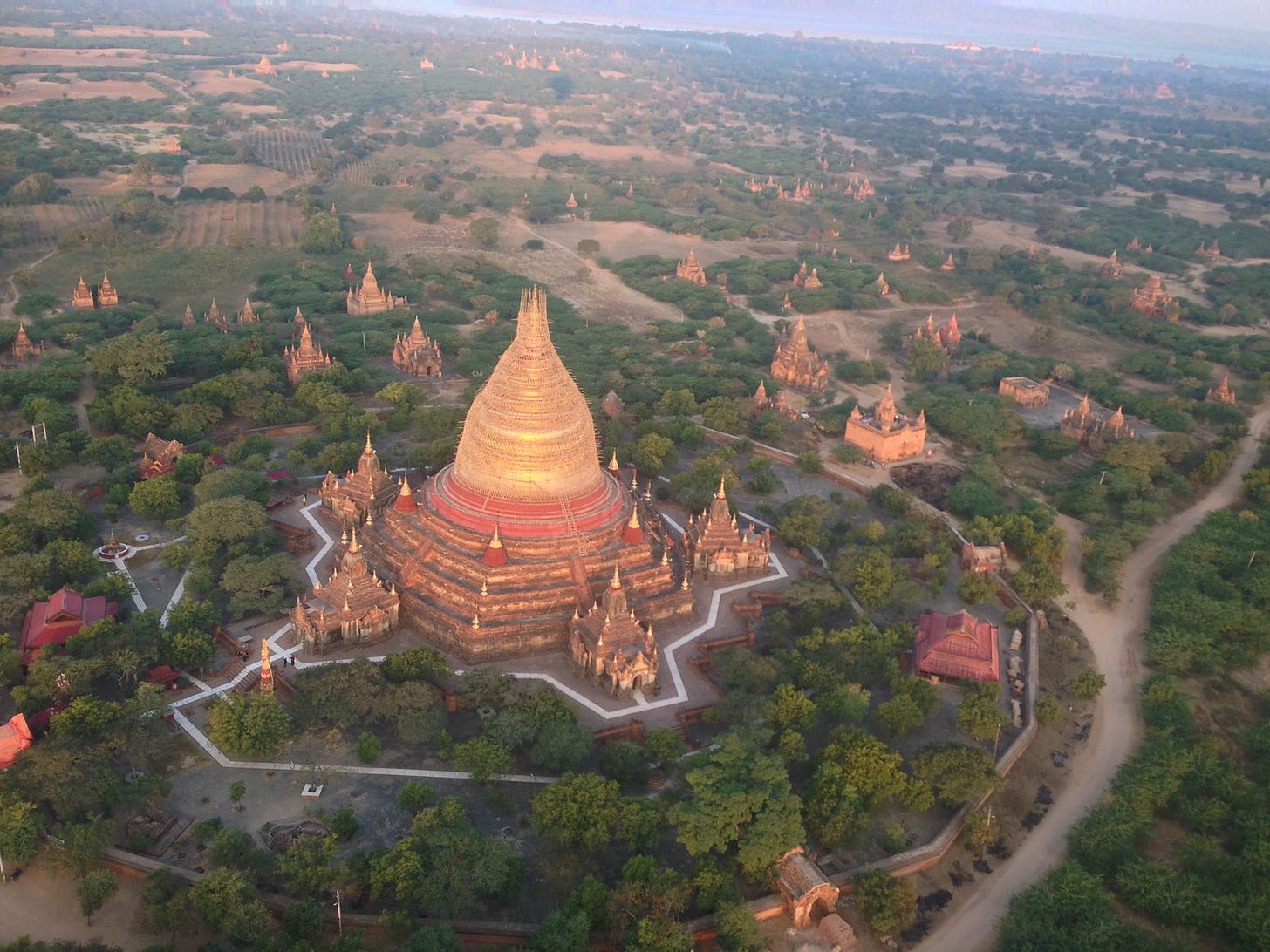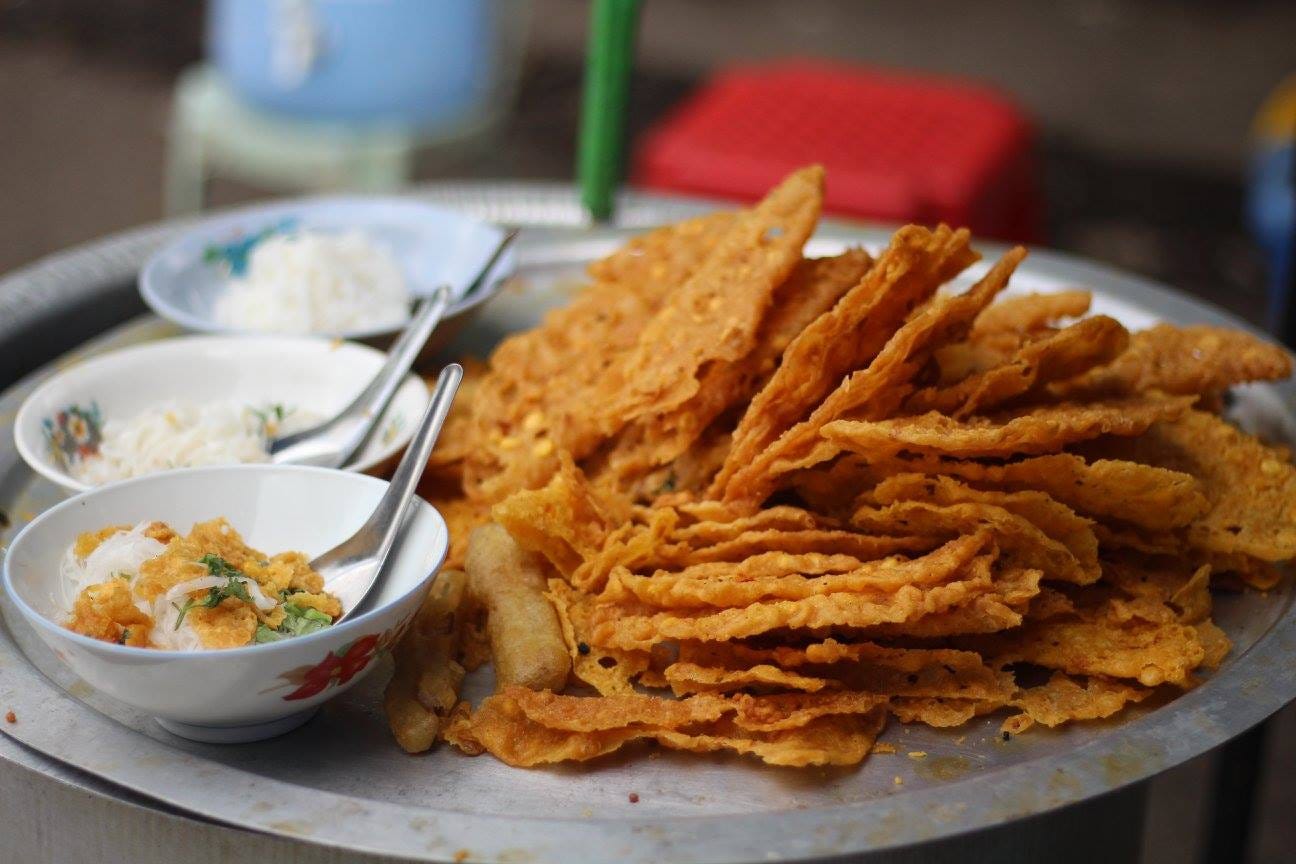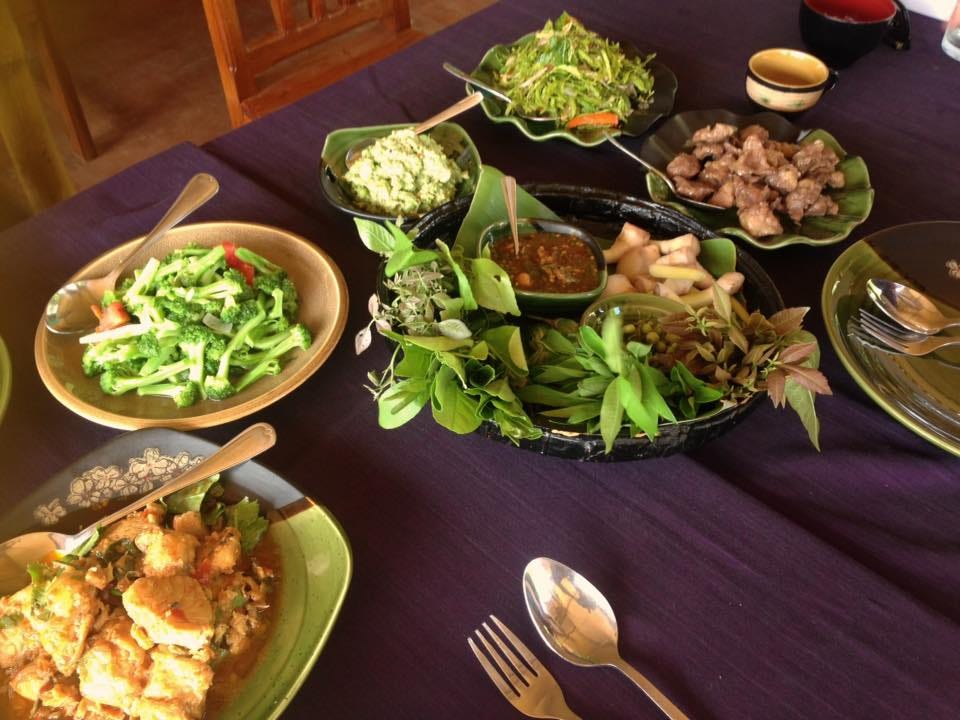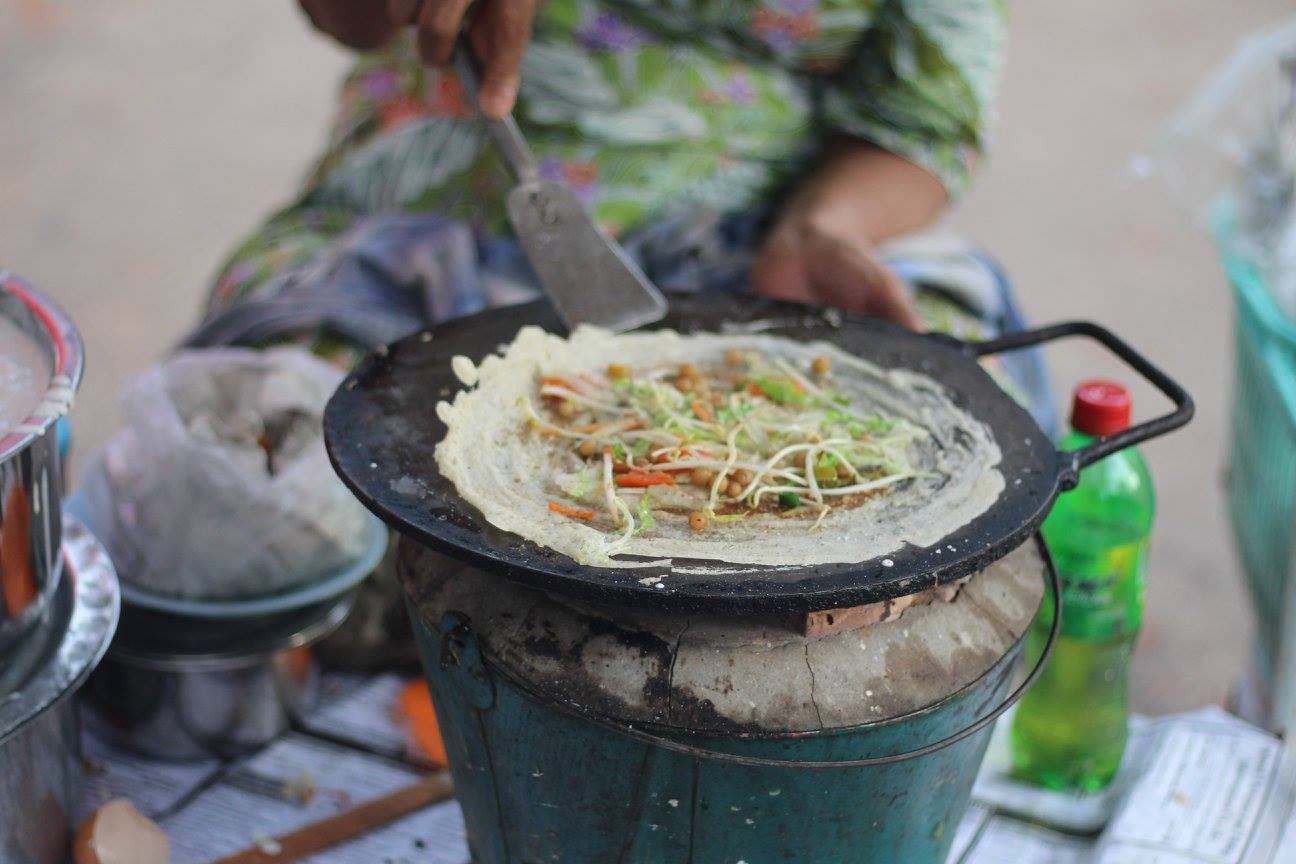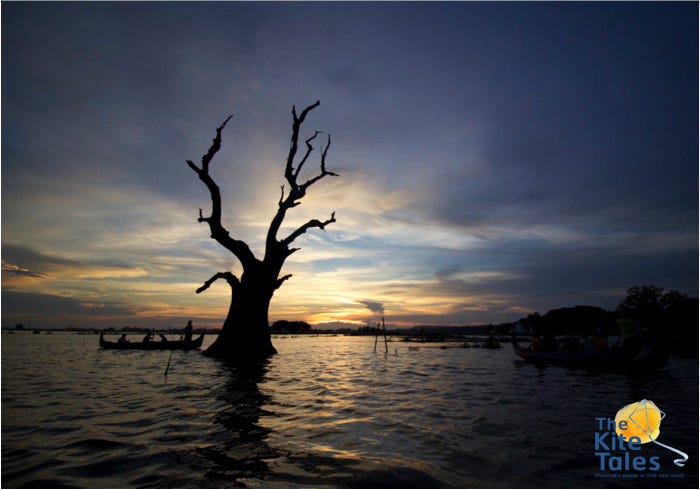A Coup, a Pandemic and a Hot, Hungry Nation
A newsletter about food systems, climate change and everything connected to them
Darkness falls over the Golden Land
On Sunday evening, we were watching what was supposed to be the last funny YouTube video before going to bed. But as I absent-mindedly scrolled through my twitter feed, I saw alarming tweets from activists and journalist friends from and in Myanmar saying the military had detained the country’s senior civilian leaders in pre-dawn raids.
I frantically tried to contact my family and friends back home and discovered our worst fears had come true - a coup d’etat in the middle of a pandemic, with public hospitals already overwhelmed. A coup d’etat in a country where existing hunger and malnutrition levels, already worryingly high, are likely to increase further from a devastating economic crisis.
Thus began a long, painful week. It has been very difficult to concentrate on anything other than what’s happening back home. The worst part has been the feeling of helplessness, but I realised I can contribute something - educating people on food security, climate change and humanitarian needs in Myanmar, formerly known as Burma and portrayed in tourist brochures as “The Golden Land” because of the staggering number of gold-leaf-covered pagodas scattered all over the country.
I’m going to keep politics aside for this newsletter, but if you want to know what I think about the latest developments, here’s an op-ed I wrote for Politico Europe.
A bit of background
To those not familiar with the country, kite-shaped Myanmar is wedged between India, China and Thailand, with stunning jagged peaks along its norther borders and the land becoming flatter as you move southwards. Admittedly I’m partial, but it is also a stunning country full of friendly, diverse people, from the plains of Bagan with thousands of pagodas (the picture above) to the stunning lakes in the mountainous east and north, and the beaches in the west and south.
I’ve said before that it is an agrarian country - agriculture, forestry and fishery accounted for 21% of GDP in 2018, and 48% of total employment in 2020, according to the World Bank.
Blessed with fertile soils and abundant water resources, we can grow just about anything - fruits and vegetables, tea and coffee, grains and pulses. In fact, we used to be known as ‘Asia’s Rice Bowl’, because at one point we were the largest exporter of rice in the world, and we have a collective obsession with rice. When we greet each other, we don’t ask, “How are you?”. We ask, “Have you had rice?”.
But Myanmar is also extremely vulnerable to the vagaries of the weather.
An increase in temperature could make life in the dry zone unbearable. Already, mean temperature has risen by around 0.08°C each decade, higher in coastal and inland regions. Rising sea levels and salinity intrusion threaten the fertile Irrawaddy Delta. Increased frequency and intensity of storms could further devastate the western state of Rakhine, already one of the country’s poorest. Environmentalists have been sounding the alarm for many years - one has said Myanmar has lost 40 days from its annual monsoon in the past 35 years.
Perhaps part of the reason I’m so passionate about food and climate change is exactly because I was born in a country where both have the potential to devastate lives and livelihoods.
Going hungry
Despite the natural resources, millions of people in Myanmar remain mired in poverty. Historians trace it back to disastrous economic and agricultural policies implemented after a coup in 1962, just as the country was recovering from World War II. This also led to nearly half a century of iron-fisted military rule where people lived in near-constant fear.
If you want to find out more about that coup, this section in Britannica and this research paper give much better background than I ever could. Unfortunately you will have to pay to access the latter but if you’re an independent researcher you can register and read a set number of articles for free each month.
These decades of mismanagement have left millions of people in hunger. While the situation has improved dramatically in the past decade, the U.N. said 7.5 million people - out of more than 54 million - went to bed hungry between 2017 and 2019 (Table A1.2).
Even more worrying, a staggering 61% cannot afford a healthy diet, another U.N. Report said (Table 1). This report also showed nearly 1 in 3 children are stunted - meaning they are too short for their age and this condition also affects cognitive growth - while nearly 25% of adults are overweight (Figure 32 for both).
NomNomNomNomNom
Remember that obsession with rice I talked about earlier? Yeah, that’s one of the reasons for the stunting and obesity numbers. We don’t feel full unless we’ve had heaps and heaps of white rice for breakfast, lunch and dinner but that is not exactly a nutritious meal. This short video (scroll down to see it) and this article, both by yours truly, explain more.
Part of it is cost - a nutritious diet costs more than twice as much as an energy dense one, according to a paper by the FAO, the U.N. food agency - and part of it is that even though some of the ethnic regions grow delicious and nutrient-rich fruits and vegetables, bad infrastructure means they aren’t easily available in other parts of the country.
But I don’t want you to think Burmese food isn’t delicious. It is. And varied. Read this little personal essay I recently wrote about how cooking it kept me sane during Italy’s lockdowns to get a taste (pun intended) of what’s on offer.
There’s more. When I was setting up The Kite Tales with a journalist friend, we ate our way through Myanmar while recording the oral histories of ordinary people, like this fermented fish dish that’s a staple in central Myanmar, or the sweet, earthy home-made rice wine from Kayah State in the east or a deliciously spicy fish curry from Kachin State in the north.
COVID-19 & Coup
Many people in Myanmar have been stuck at home for much of 2020 because, like everywhere else, it was under strict lockdowns to stop the spread of COVID-19. And the economic fallout from the pandemic could push poverty levels from 22.4% to 27% this year, according to warnings by the World Bank.
Already, 35% of 2,000 households surveyed said they earned no income in September and 30% said the same in October, with urban families faring worse, according to a November assessment by the International Food Policy Research Institute (IFPRI). The same assessment also found the share of women in Yangon saying they had not eaten enough healthy food in the past month rose from 18% in August to 25% in September and to 30% in October.
If the aggregate impact is this worrying, I wonder what it would mean to the nearly 350,000 people who fled their homes in Shan, Kachin, Kayin and Rakhine States because of fighting between ethnic armed groups and Myanmar’s military and more than 900,000 Rohingya Muslim refugees stuck in squalid camps across the border in Bangladesh.
So the coup, coming when it did, raised major concerns among humanitarian agencies operating in Myanmar. This article by The New Humanitarian does a good job of outlining what the issues are.
And climate too?
All this is happening against a backdrop of changes in weather patterns, hotter and drier in many places but also wetter and stormier in others. The complex and interconnected mix of conflict, climate change and COVID-19 that’s now threatening to drag Myanmar back by decades is essentially a microcosm of what’s happening in many developing countries around the world.
I’m trying to remain hopeful, because I know people who are doing their darndest to improve lives and livelihoods, despite the circumstances, including a new crop of dynamic and socially- and environmentally-conscious food and agri entrepreneurs.
There’s Kokkoya Organics, an urban farm in Yangon supporting local farmers, plant-based-protein company Earthmother which is also exploring plastic-free packaging, and free-range egg company and U.N. award winner Shwe Taung Nyo Gyi which was started by two dads who were worried about their kids’ nutrition, just to name a few.
Products from Behind The Leaf Coffee, which works with ethnic Pa-O villages, are actually available in Singapore and parts of America, and so are the teas, spices and grains from The Burgundy Hills Company.
And there are organizations like Proximity Designs, who does such amazing job coming up with affordable, low-tech and effective tools for farmers. I wrote about their soil testing services here and a bit of their design process here.
So as this exhausting week draws to a close, I’m hoping they can continue doing their great work no matter who is in power.
A final non-Myanmar note - CFS next week
The U.N. Committee on Food Security is organising its annual meeting next week, postponed from the usual October timing because of, well, COVID-19. You can see the timetable and other details here. Some interesting side events too.
Have a great weekend. As always, please feel free to share this post and send tips and thoughts on twitter @thinink, to my LinkedIn page or via e-mail thin@thin-ink.net.


